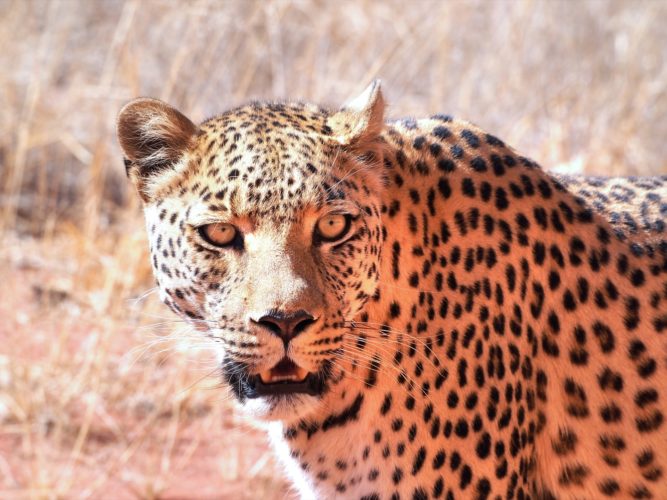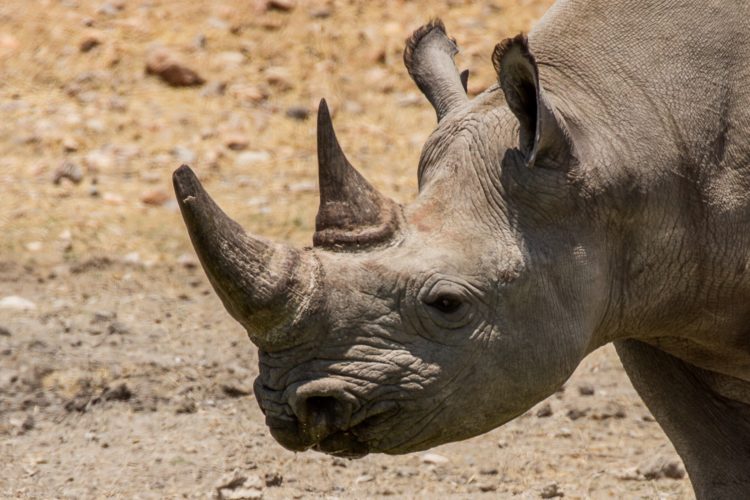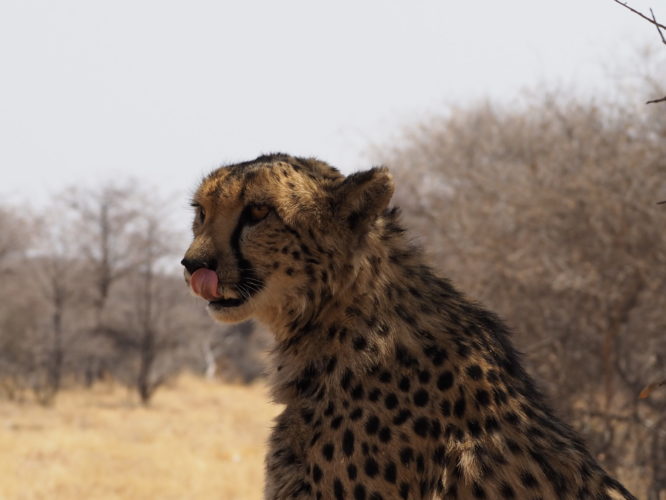Without doubt, Etosha National Park is Namibia’s top wildlife destination.
Located in the north of the country, Etosha is enormous – over 22,000 square kilometres. You won’t come close to covering it all during your Etosha safari. So simply immerse yourself while here and make the most of every moment.
Etosha’s name translates as ‘Great white place of dry water’. It surrounds an enormous salt pan that’s so large it can be seen from space. Around the mineral pan are waterholes and perennial springs that attract hordes of wildlife, which congregates here and provides incredible game viewing and photographic opportunities.
Viewing the abundant plains game at the waterholes is always exciting, watch in anticipation as the animals approach with caution, checking for predators before quickly drinking and moving on. Etosha National Park has three floodlit waterholes and viewing the action at night is a particular treat.
There are more than 110 different mammal species found in the park, several which are rare and endangered. This is one of the best places in the world to spot rhinos, in particular black rhinos – the park is home to about more than a third of the world’s global population.
Predators are here in strong numbers, too, including leopard, lion, hyena, cheetah and caracal.
You’ll also see the majestic elephant – Etosha’s elephants are also reputed to be some of the largest in Africa – but it’s important to remember you won’t see buffalo, so this is not a Big Five destination.
Other animals that can be seen in Etosha National Park are giraffe, zebra, roan antelope, eland, red hartebeest, oryx, kudu, springbok, gemsbok and the endangered black-faced impala.
Birdwatching in Etosha is also rather special, with 340 different species, including 46 raptors. During the wet season the pans gather water, encouraging the growth of a blue-green algae which attracts huge numbers of flamingos, as well as impressive flocks of birds such as queleas.
Etosha Safaris are available all year round. During the dry winter months (June to September) the animals congregate more around the waterholes. November to March herald the rains – this time of year is ideal for birding, births and to witness young species fighting for survival, but keep in mind it can be very hot.
Ready to plan your Namibia safari?
Etosha Accommodation
There are numerous accommodation options in and around Etosha. You can stay inside the national park itself or opt for a private concession that adjoins it. Both choices offer unique advantages and considerations and there’s various levels of pricing and luxury.
To make the most of your time at Etosha, we recommend trying out at least two different properties during your visit.
Accommodation inside Etosha National Park
Properties inside the national park are government run camps, hugely popular for location and affordability.
They are large camps so expect lots of vehicle traffic and people. Rooms are chalet or bungalow in style with ensuite facilities. The camps themselves offer restaurant or cafe service, a small store, floodlit waterhole for night viewing and some have swimming pools.
Accommodation outside Etosha National Park
There are private reserves skirting around the outside of Etosha National Park offering a more inclusive, luxury experience with safari activities in their own concession. So this is the type of place you would choose to escape the crowds and budget campers.
The downside of course is to see Etosha proper, you need to drive and enter the National Park gates paying park fees enroute.





